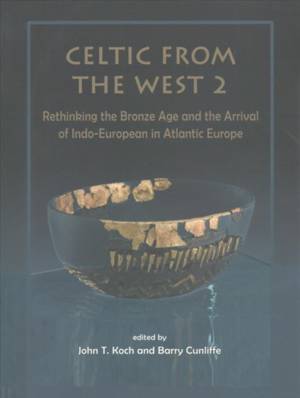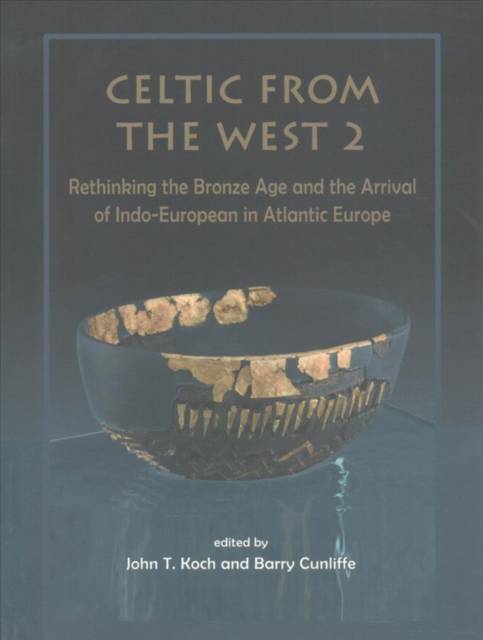
- Afhalen na 1 uur in een winkel met voorraad
- Gratis thuislevering in België vanaf € 30
- Ruim aanbod met 7 miljoen producten
- Afhalen na 1 uur in een winkel met voorraad
- Gratis thuislevering in België vanaf € 30
- Ruim aanbod met 7 miljoen producten
Zoeken
Celtic from the West 2
Rethinking the Bronze Age and the Arrival of Indo-European in Atlantic Europe
€ 50,45
+ 100 punten
Omschrijving
Europe's Atlantic façade has long been treated as marginal to the formation of the European Bronze Age and the puzzle of the origin and early spread of the Indo-European languages. Until recently the idea that Atlantic Europe was a wholly pre-Indo-European world throughout the Bronze Age remained plausible. Rapidly expanding evidence for the later prehistory and the pre-Roman languages of the West increasingly exclude that possibility. It is therefore time to refocus on a narrowing list of 'suspects' as possible archaeological proxies for the arrival of this great language family and emergence of its Celtic branch. This reconsideration inevitably throws penetrating new light on the formation of later prehistoric Atlantic Europe and the implications of new evidence for interregional connections.
Celtic from the West 2 continues the series launched with Celtic from the West: Alternative Perspectives from Archaeology, Genetics, Language and Literature (2010; 2012) in exploring the new idea that the Celtic languages emerged in the Atlantic Zone during the Bronze Age. This Celtic Atlantic hypothesis represents a major departure from the long-established, but increasingly problematical scenario in which the Ancient Celtic languages and peoples called Keltoi (Celts) are closely bound up with the archaeology of the Hallstatt and La Tène cultures of Iron Age west-central Europe.
Celtic from the West 2 continues the series launched with Celtic from the West: Alternative Perspectives from Archaeology, Genetics, Language and Literature (2010; 2012) in exploring the new idea that the Celtic languages emerged in the Atlantic Zone during the Bronze Age. This Celtic Atlantic hypothesis represents a major departure from the long-established, but increasingly problematical scenario in which the Ancient Celtic languages and peoples called Keltoi (Celts) are closely bound up with the archaeology of the Hallstatt and La Tène cultures of Iron Age west-central Europe.
Specificaties
Betrokkenen
- Uitgeverij:
Inhoud
- Aantal bladzijden:
- 237
- Taal:
- Engels
- Reeks:
- Reeksnummer:
- nr. 16
Eigenschappen
- Productcode (EAN):
- 9781785706523
- Verschijningsdatum:
- 18/05/2017
- Uitvoering:
- Paperback
- Formaat:
- Trade paperback (VS)
- Afmetingen:
- 188 mm x 244 mm
- Gewicht:
- 929 g

Alleen bij Standaard Boekhandel
+ 100 punten op je klantenkaart van Standaard Boekhandel
Beoordelingen
We publiceren alleen reviews die voldoen aan de voorwaarden voor reviews. Bekijk onze voorwaarden voor reviews.










